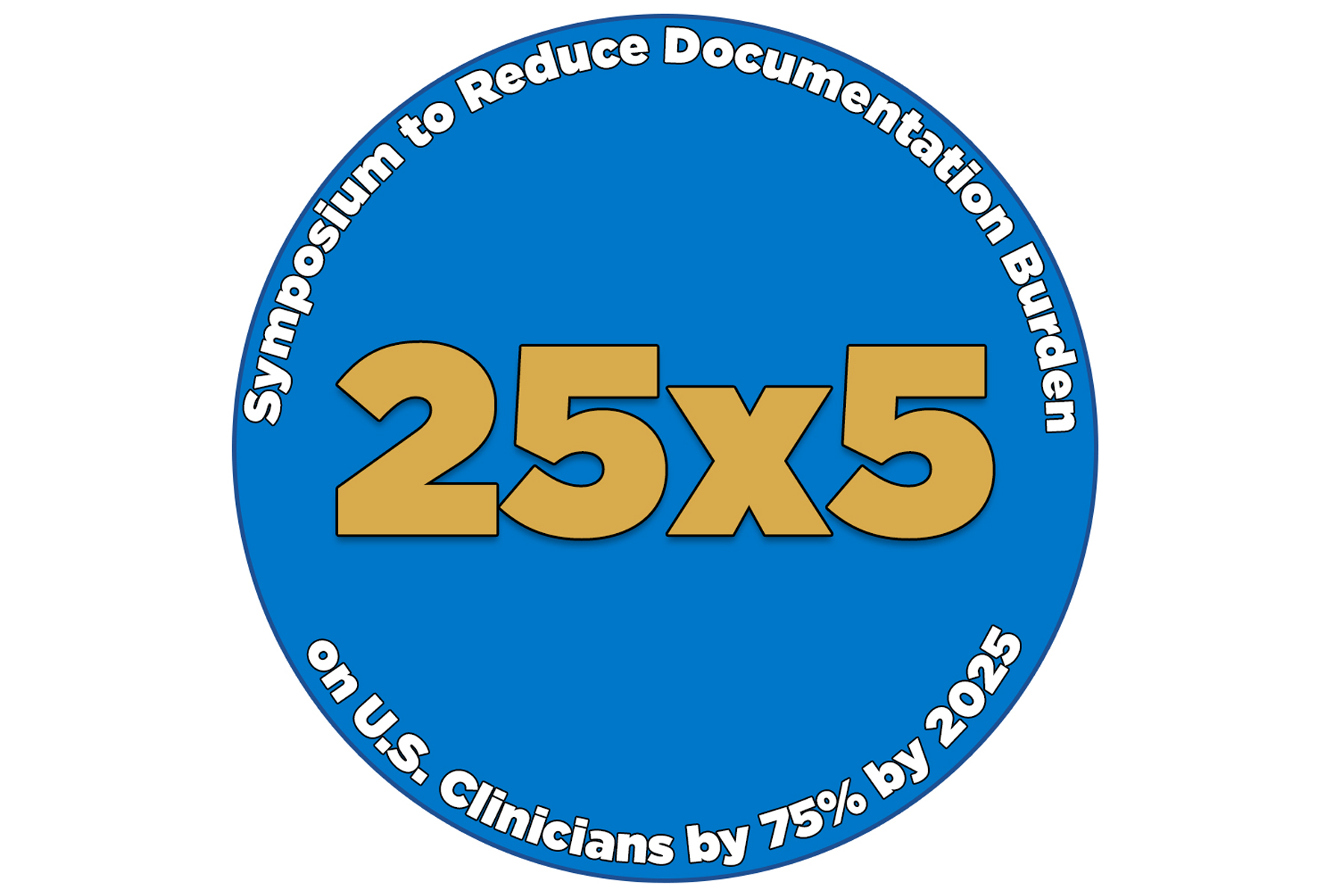Clinical Documentation Burden Reduction Summary
Shared From NLM-Funded 25x5 Symposium
Over 300 stakeholders throughout the healthcare community collaborated early this year to reduce the burden of clinical documentation by more than 75% within four years. The output of the National Library of Medicine-funded 25×5 Symposium — which includes current challenges, exemplars, and calls to action — is now available within this executive summary.
“The 25×5 initiative has reframed how major improvements in the efficiency and effectiveness of electronic health records can be achieved,” said Christine Sinsky, MD, Vice President of Professional Satisfaction at the American Medical Association. “Working together, the medical community can achieve these important goals for clinicians and the patients they serve. Thank you for the splendid work.”

Leaders in medicine and biomedical informatics from Columbia University, Vanderbilt University Medical Center (VUMC), the American Medical Informatics Association (AMIA) and the National Institutes of Health (NIH) developed the 25×5 Symposium to establish strategies and approaches to reduce clinician documentation burden to 25% by 2025. The symposium, held over six weeks in early 2021, included 33 presentations from stakeholders that represented health systems, academic, industry, government, payers and professional societies.
“The 25×5 Symposium participants generated a tremendous amount of data describing specific actions that will reduce documentation burden,” said co-chair Trent Rosenbloom, MD, MPH, FACMI, Vice Chair of Faculty Affairs & Professor in the Department of Biomedical Informatics at VUMC. “Steering Committee members synthesized this data and derived 82 specific action items and categorized them into short-term, medium-term, and long-term work.”
A thematic analysis of action items across domains revealed four themes to the 25×5 Steering Committee: Accountability, Evidence, Education and Training, and Innovation of Technology. These action items were prioritized into Calls to Action for three stakeholder groups: Providers and Health Systems, Vendors, and Policy Advocacy. The specific Calls to Action are described in the executive summary within the 25×5 homepage, which features all presentations from the six-week event.
Documentation burden can lead to a variety of negative outcomes, including clinician burnout & decreased satisfaction, medical errors, and hospital-acquired conditions. It stems from a misalignment between electronic health record (EHR) usability, ever-evolving clinical and regulatory demands, and clinician satisfaction related to entering and using EHR data.
“Healthcare professionals need to be able to focus on the important work of caring for patients, but their time and resources are challenged by the growing problem of clinical documentation burden,” said co-chair Sarah Rossetti, RN, PhD, FACMI, FAMIA, an Assistant Professor of Biomedical Informatics and Nursing at the Columbia University Medical Center. “Documentation burden is complex with numerous contributing factors and we need to move beyond describing the problem to identifying actionable recommendations that will result in solutions to benefit clinician well-being and patient care.”
The steering committee co-chairs reinforced that this work is ongoing, and continue to seek new collaborators to join this important effort. If anybody has questions or comments, please contact Trent Rosenbloom at trent.rosenbloom@vumc.org and/or Craig Sachson at cs3910@cumc.columbia.edu.
The symposium was funded by the National Library of Medicine (1R13LM013581-01).


